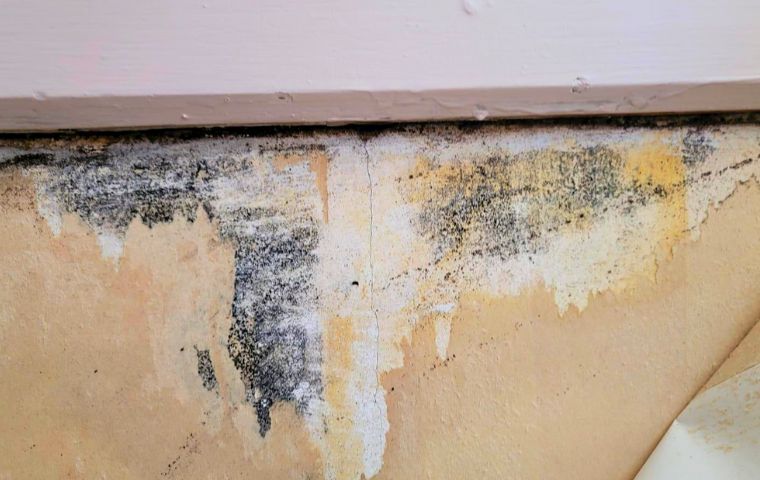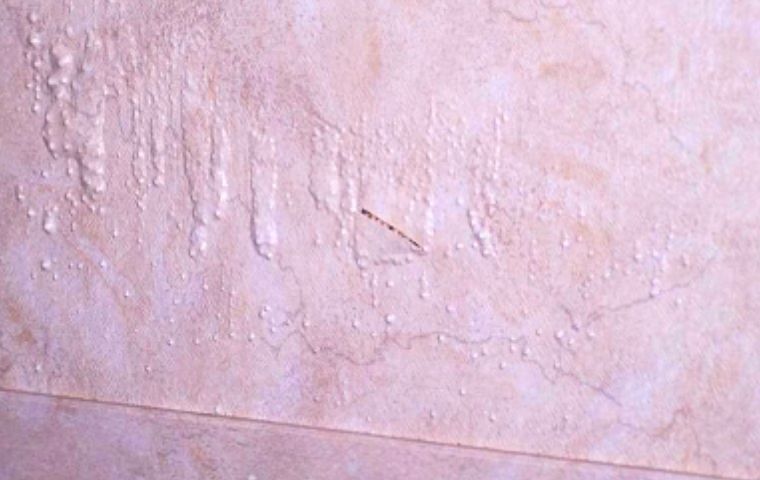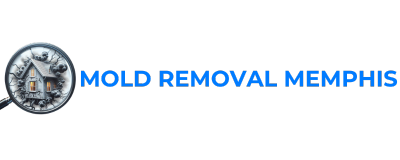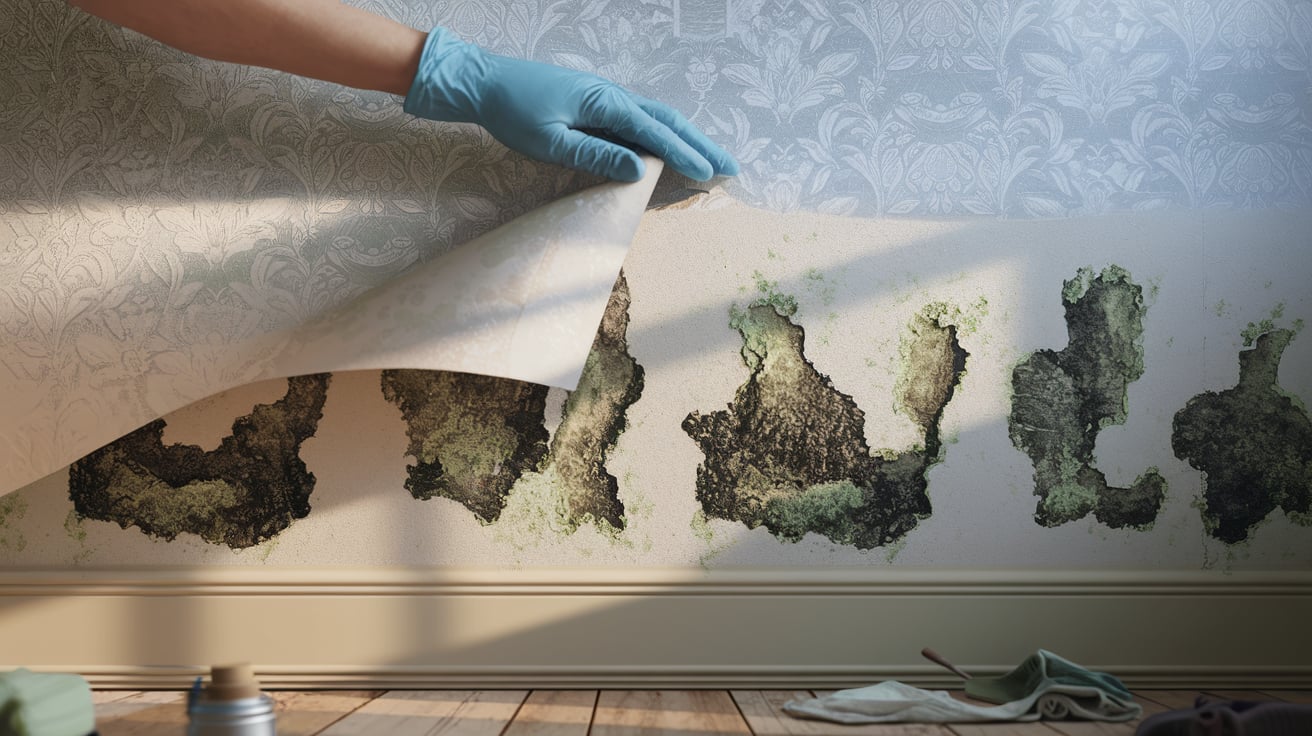Mold Behind Wallpaper: Causes, Signs And Removal Tips
TL;DR: Mold behind wallpaper, especially in older homes, often appears as black spots and poses health risks. Homes built as early as in 1900s may have accumulated mold over time. Focus on areas near windows or exterior walls. A moisture meter helps identify damp sections. For small mold patches, clean with a 25% bleach solution or hydrogen peroxide, ensuring no oversaturation. Larger areas may need a HEPA vacuum to remove spores safely. After cleaning, treat surfaces with products like “Natural Shield,” Gardz, or Zinsser 123 before redecorating. Also, sonsider applying Stormdry to exterior walls and using thermal lining paper with Wallrock thermal paste. Replace drywall if mold has penetrated it. Keep humidity between 35-55% to prevent mold. In humid climates, air conditioning helps control moisture. Fix leaks, improve drainage, and use dehumidifiers. Ensure proper ventilation and insulation to avoid condensation.
Dealing with mold behind wallpaper can be a real headache for homeowners. Many people discover unsightly mold or mildew lurking underneath layers of wallpaper, often triggered by moisture issues like leaks or condensation. This can lead to concerns about health risks, especially if the mold is black or appears extensive. Questions arise: Is mold behind wallpaper dangerous? How can you tell if it’s affecting your health? And what’s the best way to clean or prevent it? If you’re grappling with these issues, you’re not alone. In this guide, we’ll explore effective solutions and preventive measures to keep your home mold-free.
How To Tell If There Is Mold Behind Wallpaper?

To find mold behind wallpaper, watch for signs of moisture and fungal growth. Wallpaper that peels, bubbles, or changes color, especially around windows, in corners, or on exterior walls, often points to hidden mold. Black, green, or brown spots on the wallpaper surface can also suggest mold underneath. If you notice a musty smell in the room, that’s another clue.

High humidity or recent water damage increases the chances of mold. You can use a moisture meter to check how damp the walls are, comparing affected areas to known dry spots. Condensation on windows or walls may also lead to mold growth. If people in the home are having allergy-like symptoms or respiratory issues, it could be because of mold you can’t see.
If the house has a history of leaks or flooding, pay close attention to wallpapered areas. Sometimes, mold appears as a fuzzy or powdery substance on the wallpaper. You can lift a small corner of the wallpaper to see if there’s discoloration or a moldy smell underneath.
Older homes or buildings with layers of wallpaper are more likely to have trapped moisture, which leads to mold. When you remove wallpaper, check both the paper and the wall for mold. Soft or crumbly drywall often means significant mold damage. In places with high humidity, like bathrooms, kitchens, or basements, be extra careful when checking for mold behind the wallpaper.
What Environmental Conditions Influence Mold Growth Behind Wallpaper?
Mold growth behind wallpaper depends a lot on the environment, especially the temperature and humidity levels. When these factors are just right, mold spores can start to grow. The texture of the wallpaper, like if it’s cracked or rough, can trap moisture and nutrients, which makes it easier for mold to develop. Plus, if the wallpaper has organic materials in it, that speeds up the process even more.
It’s important to understand how these environmental factors and the makeup of the wallpaper work together to increase the chances of mold. For example, if the air is humid, the wallpaper can hold onto more moisture, which increases the likelihood of mold, especially in areas where the airflow isn’t great or the space is tightly sealed.
The way wallpaper handles moisture is also key. Some wallpapers let water vapor pass through, which can help reduce the risk of mold by letting the moisture escape. But if moisture gets stuck behind the wallpaper and the temperature is right, mold can easily start to grow.
A study conducted by Seung Ho Ryu and Hyeun Jun Moon is titled “Evaluation of the Influence of Hygric Properties of Wallpapers on Mould Growth Rates Using Hygrothermal Simulation.” The researchers used models like WUFI Plus and WUFI-Bio.
The simulations revealed a strong correlation between hygric properties of wall paper and mold growth rates. For example, wallpapers with high moisture storage capacity tend to retain more moisture, creating a more suitable environment for mold spores to germinate.
The bio-hygrothermal model WUFI-Bio was particularly useful in assessing these risks under various environmental conditions. This relationship highlights the importance of selecting appropriate materials with favorable hygric properties for areas susceptible to high moisture levels. Materials with poor hygric properties can result in not only mold growth but also health issues for building occupants due to the release of mold spores into the indoor air.
Can Mold Under Wallpaper Make You Sick?
Mold growing under wallpaper can be a serious health concern for anyone living in the space. Even if you can’t see the mold, it can still release spores and harmful toxins into the air. These tiny particles can pass through walls and other surfaces, causing health issues like breathing problems, allergies, and in some cases, more severe conditions.
People exposed to mold might start coughing, wheezing, feeling stuffed up, or dealing with eye irritation and skin rashes. In more severe cases, especially for those with weak immune systems or long-term exposure, mold can lead to chronic health problems and even affect the nervous system.
When there are multiple layers of wallpaper, it can make things worse by trapping moisture, which mold thrives on. High humidity, poor ventilation, and damp areas, especially those with frequent condensation or water damage, are perfect for mold to grow behind wallpaper.
Health experts and air quality specialists stress how important it is to deal with mold problems quickly to avoid these health risks. The idea of “sick building syndrome” shows the link between bad indoor air quality, often caused by hidden mold, and health problems for the people inside.
How Does Wallpaper Composition Influence Mold Growth?
The type of wallpaper you choose plays a big part in whether mold can grow behind it. According to the study by CONIDIA researchers Sébastien Vacher and Catalina Hernandez titled “Impact of paint and wall-paper on mold growth on plasterboards and aluminum,” the material used in wallpaper affects how easily mold can form.
Wallpapers with high levels of organic carbon, like those made from cellulose, are more likely to grow mold. This happens because mold feeds on organic materials, so surfaces with a lot of carbon give mold what it needs to thrive.
Interestingly, even materials that aren’t biodegradable, such as aluminum, can still end up with mold if wallpaper or paint is applied. Many people think these materials are mold-proof, but that’s not always true. Once you cover them with something like wallpaper, even surfaces that were resistant to mold can start to support fungal growth. This shows how important it is to pick the right wallpaper, especially in areas with a lot of moisture where mold is more likely to form.
The study also shows that whether the wallpaper is treated with a biocide or not matters. Biodegradable wallpapers tend to attract mold more easily than non-biodegradable ones. When paired with high humidity, these types of wallpaper are especially prone to mold. The study makes it clear that wallpaper composition is key in preventing mold. Wallpapers with less carbon are usually better at keeping mold away compared to those with organic materials.
Are Biocide-Treated Wallpapers Effective In Preventing Mold Growth?
Biocide treatments can delay fungal development but are not a foolproof solution, especially in moisture-heavy environments. The study by CONIDIA researchers tested various biocide-treated and untreated materials to assess their resistance to mold under different conditions.
Their findings indicate that biocide-treated wallpapers offer only partial protection. This is particularly true when biocide-treated materials are applied to biodegradable substrates like plasterboard. In such cases, moisture infiltration can still trigger mold growth and reduce the effectiveness of the biocide.
Vacher et al. emphasize that biocide-treated wallpapers are most effective when paired with non-biodegradable substrates, as these combinations reduce the amount of organic material available for mold to feed on. However, in environments where moisture is not properly controlled, even the best biocide treatments may not prevent mold from taking hold.
Which Types Of Mold Are Commonly Found Behind Wallpaper?
The most common types of mold and fungal species found behind wallpaper include Penicillium, Aspergillus, Stachybotrys, Chaetomium, and Cladosporium. These molds are known for their ability to thrive in moisture-rich environments, particularly in areas where organic materials, such as biodegradable wallpapers, are present. These molds not only grow on wall surfaces but also become airborne, impacting indoor air quality.
Penicillium and Aspergillus are the most commonly found species on plasterboard surfaces, with their presence linked to damp conditions and poor ventilation. A study by CONIDIA researchers entitled “Impact of paint and wall-paper on mould growth on plasterboards and aluminum” also highlights Stachybotrys, commonly known as black mold, which is of particular concern due to its potential to produce harmful mycotoxins. This type of mold is often found behind wallpaper in high-moisture environments and can pose serious health risks.
The researchers also mention Chaetomium and Cladosporium, which are typically associated with long-term moisture exposure. Their presence behind wallpaper underscores the need for moisture control to prevent the growth of these harmful species. or preventing the growth of these common molds.
How To Clean Mold Behind Wallpaper?
Here are the steps you can follow to clean mold behind wallpaper:
Here are the steps to clean mold behind wallpaper:
1. Assess The Situation
Begin by carefully inspecting the affected area for signs of mold or mildew. Look for peeling wallpaper, which can indicate moisture problems underneath. The mold may appear dry and dusty, and the drywall should be firm, not bulging or damp. Pay particular attention to exterior walls, especially the areas between the tops of windows and the ceiling, as these are common spots for mold development.
Mold spots around wall cracks and under windows are also telltale signs. Remember that mold behind wallpaper often results from trapped moisture, which can occur even without visible leaks.
2. Identify The Cause
Mold growth is typically caused by excess moisture. So, investigate potential sources. Common culprits include condensation from single-glazed windows, inadequate heating, and possible leaks in plumbing or roofing. In some cases, multiple layers of wallpaper can create a vapor barrier, trapping moisture behind them.
To accurately assess the moisture levels, use a moisture meter to compare affected areas with known dry areas of your home. This will help you identify any underlying moisture issues that need to be addressed to prevent future mold growth.
3. Prepare The Area
Before beginning the cleaning process, prepare the area to contain mold spores and protect yourself. Start by covering the floor with plastic drop cloths, making sure to tape them in place to catch any debris. Open windows to ensure proper ventilation throughout the cleaning process. Make sure to turn off your HVAC system to prevent mold spores from circulating throughout the house.
Personal protection is paramount when dealing with mold. Wear appropriate protective gear, including a respirator with a screw-on filter, gloves, and eye protection.
4. Remove The Wallpaper
Carefully remove all layers of wallpaper in the affected area. To make this process easier and more effective, use a pump sprayer filled with warm water and a small amount of bleach to soak the wallpaper paste. This mixture will help kill mildew and prevent spores from spreading as you work.
Start from the top of the wall and work your way downwards, gently scraping the paste with a mud knife after soaking. As you remove the wallpaper, wipe up excess moisture with a sponge to prevent it from seeping into the wall. Be extra cautious if you encounter multiple layers of wallpaper or paint over wallpaper, as these situations can create moisture traps that exacerbate mold growth.
When paint is applied over wallpaper, it can create a barrier that prevents the wallpaper from “breathing” or drying out properly. If moisture gets trapped between the wall, the wallpaper, and the paint layer, it can create a moisture trap, leading to conditions that encourage mold growth.
5. Clean The Mold
After removing the wallpaper, it’s time to clean the exposed mold. There are several effective cleaning methods to choose from. One option is to prepare a solution of 25% bleach and 75% water, applying this mixture to the moldy areas using a cloth or sponge. Be careful not to oversaturate the drywall, as this can lead to further damage.
Alternatively, you can use hydrogen peroxide instead of bleach, as some find it more effective and less harsh. For a more natural approach, a mixture of warm water and soap can be applied to the affected areas. You can also use commercial products Tilex, which are specifically designed for mold cleaning. Whichever method you choose, ensure you don’t use an overly wet cloth to avoid causing further damage to the drywall or plaster. For a thorough cleaning, consider using a HEPA filter bag in a shop vacuum to clean the area before applying your chosen cleaning solution.
6. Dry And Inspect
After cleaning the mold, allow the wall to dry thoroughly. Use fans or dehumidifiers to speed up the drying process, ensuring that no moisture remains trapped in the wall. Once dry, carefully inspect the area for any remaining mold or signs of moisture. Pay close attention to the texture of the drywall – if it feels soft or appears damaged, it may need to be replaced.
For a more thorough inspection, consider cutting out a small piece of drywall to check for mold behind it and on the studs. This step can reveal hidden mold growth that might not be visible from the surface.
7. Apply Mold-Inhibiting Products
To prevent future mold growth, apply mold-inhibiting products to the cleaned and dried surface. Start by applying a mold-killing stain-blocking primer, such as Kilz, which can help seal in odors and inhibit mold growth. For enhanced protection, consider using a product called Natural Shield, which is known for its ability to penetrate the surface effectively.
If you’re dealing with old wallpaper adhesive, use a product like Gardz to seal it before repainting. This extra step can prevent any remaining adhesive from becoming a food source for future mold growth.
Stop Mold Behind Wallpaper Before It Spreads – Call Our Experts Today!
Mold behind wallpaper can spread quickly, causing damage to your home and posing health risks. Don’t let hidden mold go unchecked—our Memphis mold removal team specializes in identifying and removing mold safely and effectively. Whether it’s caused by moisture, leaks, or poor ventilation, we have the tools and expertise to eliminate mold at the source. Contact us today for a thorough inspection and keep your home safe and mold-free!

